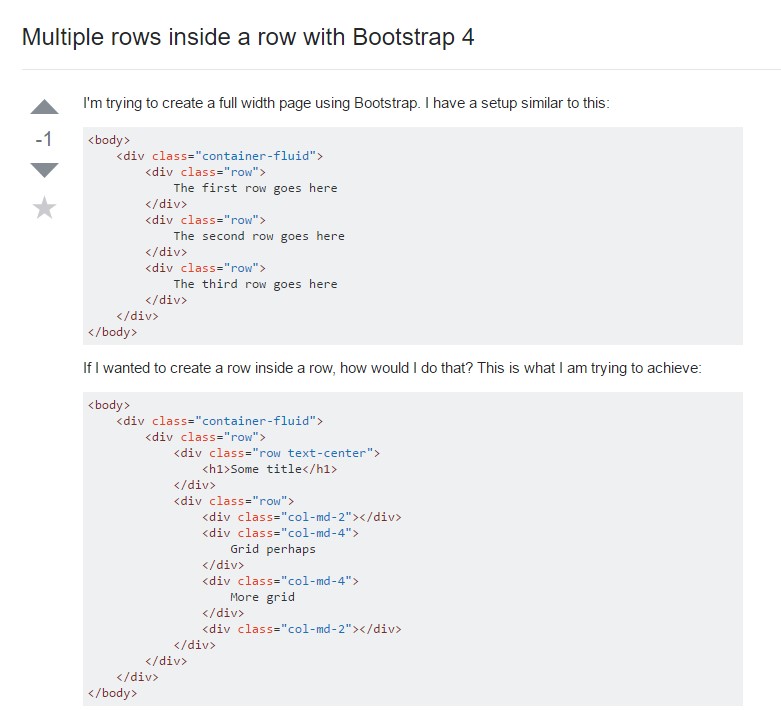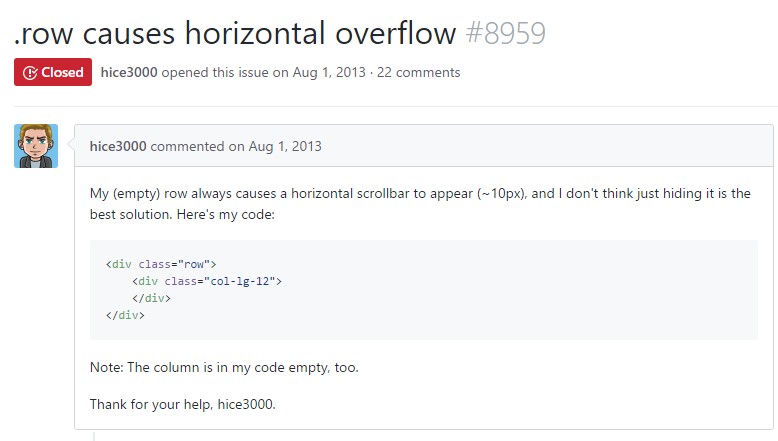Bootstrap Row Css
Introduction
Exactly what do responsive frameworks execute-- they provide us with a helpful and working grid environment to place out the content, making sure if we specify it right and so it will do the job and present effectively on any gadget despite the measurements of its display. And like in the building each framework including some of the most preferred one in its most current version-- the Bootstrap 4 framework-- include just a couple of major features that set and combined properly are able to help you develop practically any attractive appearance to fit in your style and vision.
In Bootstrap, typically, the grid arrangement gets constructed by three fundamental components which you have quite possibly already seen around looking at the code of several webpages-- these are the
.container.container-fluid.row.col-In the case that you're quite new to this entire thing and occasionally get to think which was the right way these three has to be set inside your markup here is really a plain secret-- everything you ought to bear in mind is CRC-- this abbreviation comes regarding Container-- Row-- Column. And due to the fact that you'll briefly adjust seeing the columns acting as the innermost feature it is certainly not vary possible you would definitely mistake what the first and the last C means. ( additional hints)
Couple of words regarding the grid system in Bootstrap 4:
Bootstrap's grid method employs a set of columns, containers, and rows to style as well as straighten material. It's built having flexbox and is completely responsive. Shown below is an illustration and an in-depth explore ways the grid integrates.
The mentioned above example generates three equal-width columns on small-sized, normal, big, and also extra large size gadgets utilizing our predefined grid classes. Those columns are centered in the webpage along with the parent
.containerHere is simply a way it works:
- Containers give a way to focus your web site's materials. Work with
.container.container-fluid- Rows are horizontal groups of columns that provide your columns are actually lined up appropriately. We utilize the negative margin method with regards to
.row- Web content ought to be placed within columns, also just columns can be immediate children of Bootstrap Row Inline.
- Due to flexbox, grid columns free from a established width will promptly format with same widths. As an example, four instances of
.col-sm- Column classes indicate the amount of columns you 'd like to use out of the possible 12 per row. { In such manner, assuming that you really want three equal-width columns, you have the ability to employ
.col-sm-4- Column
widths- Columns feature horizontal
paddingmarginpadding.no-gutters.row- There are 5 grid tiers, one for each responsive breakpoint: all breakpoints (extra small-sized), little, normal, large size, and extra large size.
- Grid tiers are formed on minimum widths, indicating they put on that tier plus all those above it (e.g.,
.col-sm-4- You are able to apply predefined grid classes or Sass mixins for additional semantic markup.
Recognize the limitations plus bugs about flexbox, like the inability to employ some HTML features as flex containers.
While the Containers give us fixed in max size or extending from edge to edge horizontal area on display with slight handy paddings all around and the columns grant the means to distributing the display screen area horizontally-- once again with several paddings about the actual web content giving it a space to inhale we're going to target our interest to the Bootstrap Row feature and all the cool ways we can easily use it for designating, lining up and distributing its contents utilizing the clear brand new to alpha 6 flexbox utilities that are actually a number of classes to add to the
.row-sm--md-The way to put into action the Bootstrap Row Table:
Flexbox utilities can possibly be used for developing the ordination of the elements put in a
.row.flex-row.flex-row-reverse.flex-column.flex-column-reverseRight here is precisely how the grid tiers infixes get employed-- for example to stack the
.row.flex-lg-column.flex-Together with the flexbox utilities applied to a
.row.justify-content-start.justify-content-end.justify-content-center.justify-content between.justify-content-aroundThis counts likewise to the vertical positioning that in Bootstrap 4 flexbox utilities has been actually managed just as
.align-.align-items-start.row.align-items-end.align-items-centerYet another possibilities are adjusting the materials by their base lines being straightened the class is
.align-items-baseline.align-items-stretchEach of the flexbox utilities spoken of so far assist independent grid tiers infixes-- include them right before the very last word of the comparable classes-- just like
.align-items-sm-stretch.justify-content-md-betweenFinal thoughts
Here is generally how this vital however at very first look not so adjustable element-- the
.rowCheck out a few online video training about Bootstrap Row:
Linked topics:
Bootstrap 4 Grid system: authoritative information

Multiple rows inside a row with Bootstrap 4

Yet another concern: .row
causes horizontal overflow
.row
